Greek Gods on Canvas: The Best Paintings of Mythological Art
-
Explore Famous Greek Gods Paintings
- Pallas & the Centaur (1482) by Sandro Botticelli
- The Birth of Venus by Sandro Botticelli
- The Triumph of Galatea by Raphael
- Narcissus (1599) by Caravaggio
- Leda & the Swan by Peter Paul Rubens
- The Fall of Phaeton (1605), by Peter Paul Rubens
- Prometheus Bound by Peter Paul Rubens & Frans Snyders
- Sleeping Venus by Artemisia Gentileschi
- Angelica Kauffman, "Telemachus and The Nymphs Of Calypso" (1882)
- Oedipus the Sphinx by Gustave Moreau
- Jean-Leon Grome, Pygmalion & Galatea 1890
- Herbert James Draper, The Lament of Icarus
- Perseus & Andromeda (1891) by Frederic Leighton
- Ulysses and The Sirens by John William Waterhouse
- Ariadne (1913) by Giorgio de Chirico
- FAQs
The portrayal of deities in ancient Greek artworks resonates deeply with contemporary society. They were reimagined and represented in myriad forms, spanning from traditional Greek tales to contemporary artistic interpretations. In this article, we'll delve into the world of mythology by highlighting some iconic paintings of Greek gods.
Explore Famous Greek Gods Paintings
Ovid's lyrical compositions significantly impacted artists and poets, leading to a renewed interest and reinterpretation of Greek Mythology. While Greek mythological art gained prominence during the Renaissance, it was also celebrated during the Classical Eras.
Now, let's take a closer look at some of the most well-known Greek paintings that have significantly impacted art history since the Greek Renaissance period.
Pallas & the Centaur (1482) by Sandro Botticelli

Pioneers of the Early Italian Renaissance frequently showcased Greek mythological subjects, often intertwining them with subtle Christian undertones. This was the region's dominant religion for centuries before the Renaissance movement. Pallas and the Centaur was painted by Botticelli in 1482 while he worked on his other masterpieces.
Pallas, in Greek mythology, is associated with Athena. She is the goddess of innovation and knowledge. On the other hand, the centaur is usually associated with uncontrollable passion. Scholars and historians have debated Botticelli's motives for painting this picture.
While the centaur appears to be subservient, others speculate that Athena may be taming this half-man/half-beast figure.
The Birth of Venus by Sandro Botticelli
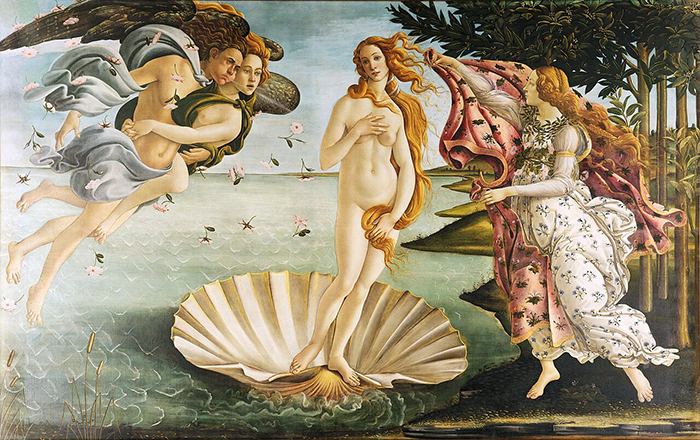
Sandro Botticelli is a famous figure from the early Renaissance in Italy. Sandro Botticelli's paintings mainly depicted Christian figures and many of Italy’s city-states' celebrities. Botticelli’s paintings are centered around Greek mythology. They honor the qualities and features of legendary beings while emphasizing their stories. One of Botticelli’s most famous paintings is The Birth of Venus.
This 1486 painting depicts a landscape that has become legendary over the years.
The goddess Venus (also known as Aphrodite) is prominently depicted in the middle of the canvas. Aphrodite, the Greek goddess of love, beauty, and procreation, symbolized beauty, love, and fertility. Aphrodite is flanked by other Greco-Roman gods. Zephyr is one of them, but there are others. Historians and critics differ in their identities.
This piece was allegedly requested by the Medici Family, who ruled Florence during the time. It covers a wide range of scenes about historical figures.
The Triumph of Galatea by Raphael
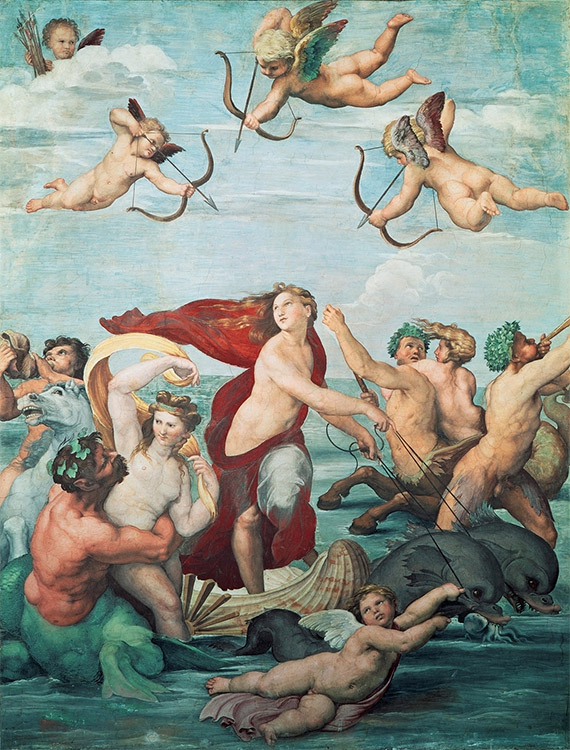
Galatea, the goddess of calm water and one of 50 Nereides, is a Greek goddess. Polyphemus, the giant with one eye, has enticed her to his cave by playing primitive pipes and giving her dairy and cheese. She turned him down and grew to love Acis, a rural sheepherder.
Polyphemos, enraged by the sight of the young lovers together, smashed the boy beneath a large boulder. She was overcome by sadness and turned her young lover into a stream. In the image, Raphael chose to represent the nymph at her apogee atop the shell chariot drawn by two dolphins.
According to art historians, the artist didn't intend to portray any actual being by Galatea but instead to depict ideal beauty. Giorgio Vasari.
Narcissus (1599) by Caravaggio
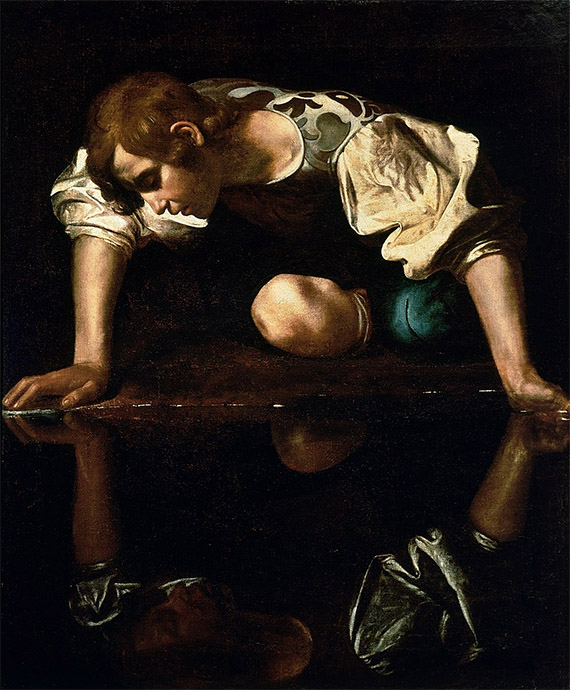
Narcissus’ story has been repeated in literature many times. Poets like Petrarch, Dante, and Renaissance artists have depicted it. Narcissus, according to legend, was known for his beauty. While hunting, he was thirsty one day and leaned up against the stream to imagine himself at the height of his youth.
He was seduced by his own image, not realizing it was himself. He succumbs when he realizes his love won't be returned.
This image shows Narcissus dressed in a gorgeous brocade doublet and staring at a warped version of himself. It is one of two Caravaggios depicting a theme from Classical Mythology. The dark circle surrounds him, and he is locked in a circular loop with his own reflection. This suggests a deep sadness.
Leda & the Swan by Peter Paul Rubens

In the form of a swan, Leda was seduced the same night she spent with her husband. Leda later produced Polydeuces, Helen, Clytemnestra, her husband's offspring, and the children of Zeus. She laid two eggs from which, according to some accounts, the children emerged.
The theme of women being captured by divine figures was common in Renaissance and Baroque artwork. It was often shown in a sensual manner.
The swan is shown in this Rubens painting, cupping its neck between Leda's breasts as she is depicted naked. The swan appears as a graceful creature that has the power to ravish.
The Fall of Phaeton (1605), by Peter Paul Rubens
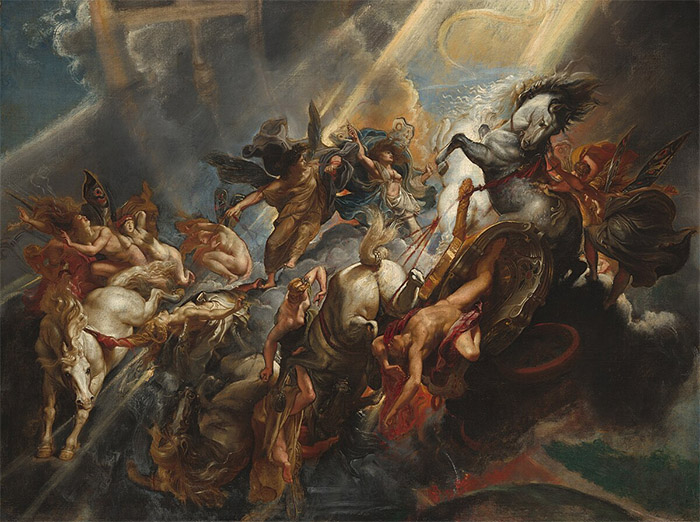
This image depicts the ancient Greek tale of Phaeton. It is a common motif in visual art. The artist Peter Paul Rubens painted it. Phaeton is the son of Clymene, and Helios. Helios promised to give him anything he wanted if he could prove that he really was his son.
Helios tried unsuccessfully to convince him not to drive the sun chariot on a particular day.
Zeus struck him with a bolt to prevent a catastrophe. Phaeton was killed when he fell from the chariot. Rubens chose the most dramatic moment of the story when Zeus's thunderbolts hit Phaeton’s chariot.
The hour and seasons are represented in the female figures with butterfly wings around them. They react in panic if the cycle of day and night is disrupted by an accident.
Prometheus Bound by Peter Paul Rubens & Frans Snyders
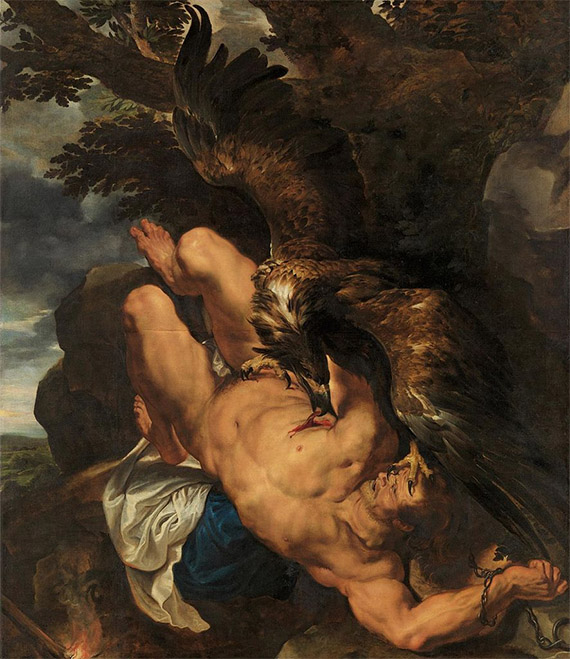
Peter Paul Rubens is a 17th-century artist known for his depictions of mythological figures from Greco-Roman and Greek mythologies. He was a friend and partner of Diego Velazquez, one of the greatest baroque artists. Prometheus Bound is one of Rubens's most famous paintings.
This painting was created in 1612 by Frans Snyders, a well-known Dutch artist.
This is one of the earliest pieces by the designer to be highly praised. Rubens painted Prometheus, while Snyders created the giant eagle. The artwork was hailed since its creation for its extraordinary realism and uniqueness in portraying the fabled story of Prometheus. This account speaks of his liver constantly being eaten by eagles.
Sleeping Venus by Artemisia Gentileschi

Artemisia Gentileschi was influenced by her father's technique and that of Michelangelo Merisi da Caravaggio. Her works are characterized by the juxtaposition of dark and light and a distinctive composition.
She often beautifully depicts women as either protagonists or victims.
Artemisia Gentileschi painted a lavish depiction of Venus snoozing under a velvet curtain.
Ultramarine is used to color her bedcover, a pricey color made from lapis lazuli crushed. Cupid is carrying a fan made of peacock feathers behind her to keep bugs away. On the left, you can see a hilly landscape with a small round temple, similar to the one dedicated to Venus near Hadrian’s home in Tivoli (just outside Rome).
Angelica Kauffman, "Telemachus and The Nymphs Of Calypso" (1882)

Angelica Kauffman, originally from Switzerland, rose to fame in England and Italy, where she founded the Royal Academy of Arts. This pendant and picture were made for Monsignor Onorato Cassetani, who commissioned the artist to create his likeness that same year.
The close-knit nature of 18th-century Roman academic circles is illustrated by the later pictures of Caetani taken in 1782 by Batoni.
The sculpture depicts Telemachus landing on Calypso’s island. Her nymphs welcome him with flowers, food, and wine. Athena is shown as an older woman who was his advisor. The sprites are pictured taking her to the left.
Oedipus the Sphinx by Gustave Moreau
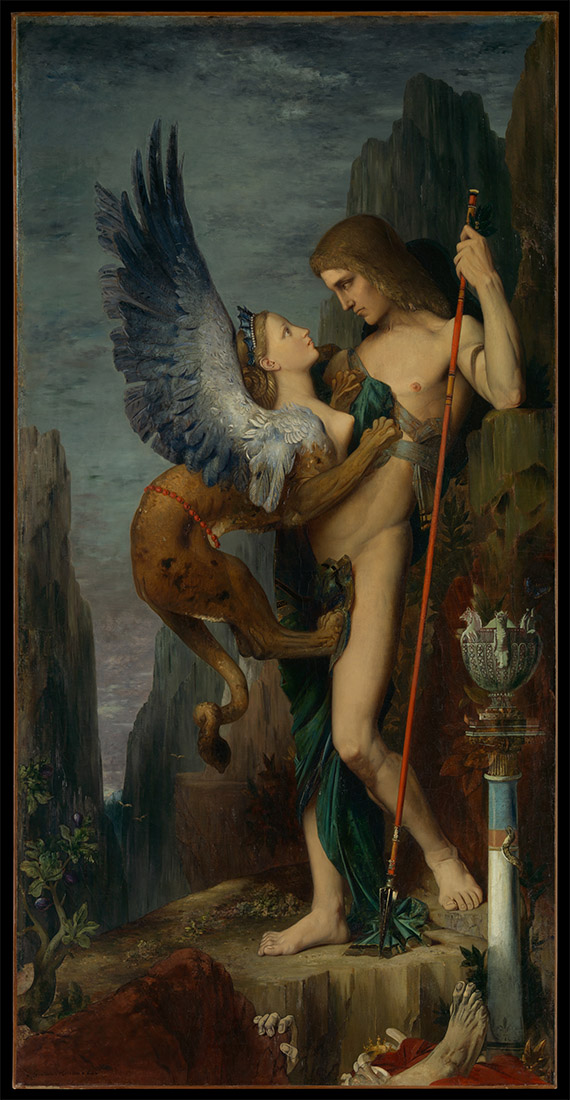
Gustave Moreau’s 1864 oil-on-canvas painting is a fresh take on the famous meeting between two mythical figures on the way to Delphi that Sophocles depicted in his play Oedipus Rex. Oedipus learned that Laius had been recently murdered and that the kingdom's fate was in the hands of the sphinx while he traveled between Delphi and Thebes.
Oedipus was given a riddle to solve by the sphinx to pass. He and all the Thebans in prison would die if he failed to pass.
When Oedipus figured out the problem, the sphinx threw herself into the ocean. Oedipus then became the new King. Moreau deliberately rejected the dominant realism in the mid-19th Century by using a mythical theme and an antique painting technique. In the painting, the sphinx attacks Oedipus, whose victory in the battle has not yet been secured.
Jean-Leon Grome, Pygmalion & Galatea 1890

Jean-Leon Gerome is a famous French painter. He specialized in Greek Mythology paintings. He was born in the 19th Century, but unlike his peers, he did not have a strong affiliation with popular movements like Impressionism.
Gerome painted a number of paintings, which are amongst the most famous Greek gods paintings in existence. However, one of his greatest masterpieces is considered to be the most significant of all.
Pygmalion & Galatea is the title of the 1890 painting. The picture depicts a famous poem by Ovid. The picture shows Pygmalion, the sculptor, kissing Aphrodite, the goddess, as she is described in the Iliad.
The work is very detailed and similar to other Gerome works. Many critics believe it closely represents the artist's workshop, where several statues were housed.
Herbert James Draper, The Lament of Icarus
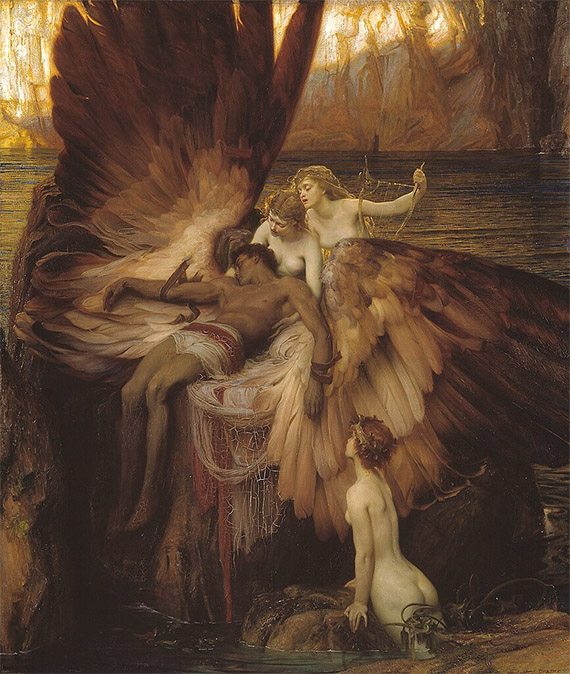
Herbert James Draper is another artist recognized for his mythology artwork that centers around Greek myths. Draper was an English artist born in 1863 who specialized in depicting themes and people from Greek and Roman Mythology.
Draper created many of the Classical masterpieces that are known today.
The artist painted scenes from Greek mythology during a period that ended in 1898. Draper's artwork focuses on Icarus after his death, while many other paintings of the story focus on Icarus at the moment of his fall.
Icarus, surrounded by nymphs, is considered one of Draper’s finest pictures by some of the best art critics of the late 19th century.
Perseus & Andromeda (1891) by Frederic Leighton
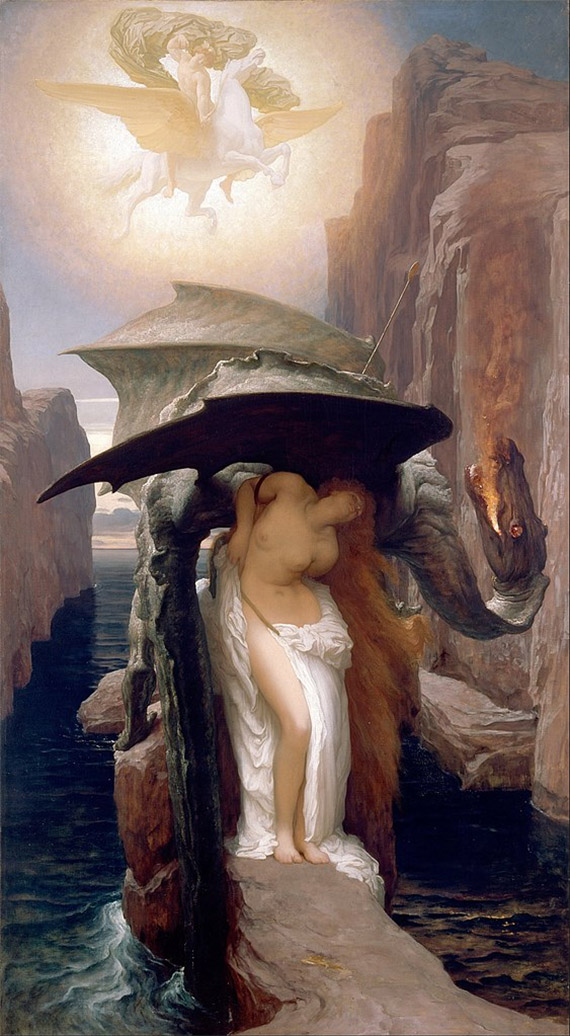
The mythical subject of Andromeda is presented in an impressive manner. The story is told on a rocky coast. Perseus, on his winged Pegasus, is shown flying above the head of Andromeda.
Perseus fires an airborne arrow, striking the sea monster, who turns to face him. The wings of the black creature shade Andromeda, who is almost bare and twisted. This gives a hint of her impending doom. Andromeda’s graceful form contrasts the black, jagged bulk of the monster’s body.
Andromeda is shown in an undamaged white body, suggesting that she was sacrificed unjustly for divine retribution directed at her mother and not herself.
Pegasus and Perseus are surrounded by a halo, which connects them symbolically to the white body of the royal tied to the rock. Leighton made a bronze-colored miniature plaster figure of Andromeda to use as a model before beginning the painting.
Although the figurine was naked, Leighton used wet materials to give it the appearance he wanted in his piece.
Ulysses and The Sirens by John William Waterhouse
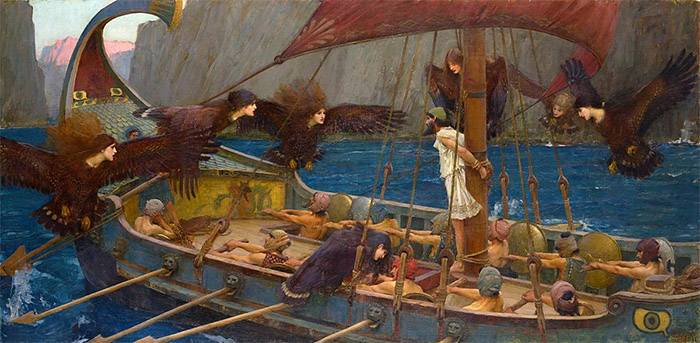
John William Waterhouse is also the Academic Group's aesthetic follower.
He was best known for his paintings of legendary creatures in clothing and costumes, which were popular in England during the period. Ulysses With the Sirens was one of Waterhouse’s most famous works. This 1891 painting depicts the famous story of Ulysses. The Greek figure is chained to a ship's mast to prevent him from succumbing to the Sirens.
Waterhouse depicted the demonic songstresses as bird-like entities with female heads.
Ariadne (1913) by Giorgio de Chirico
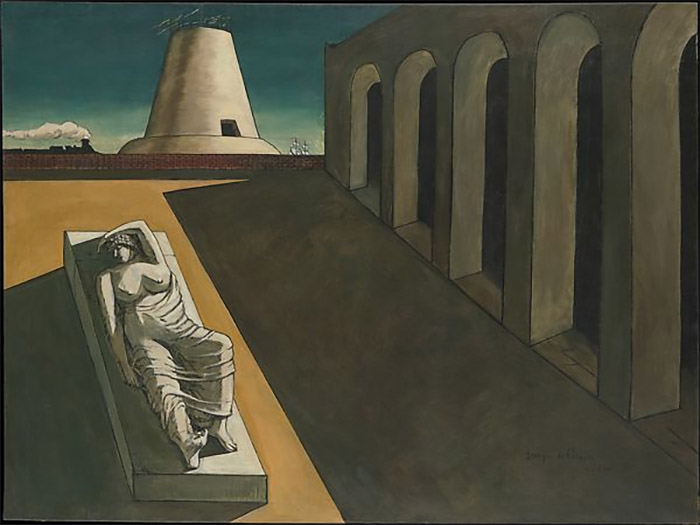
In Greek mythology, Ariadne was a princess who fell in love with Theseus. Theseus promised to kill the Minotaur - a creature with a human body and a suckling bull's face, brought by Poseidon to Minos as a tribute. She gave him both a blade and a spool thread to help him on his quest.
After Theseus killed the beast, she eloped with him and disgraced both her father's nation. He left her sleeping on Naxos island, where Dionysus discovered her and married.
Giorgio de Chirico depicted Ariadne asleep in an empty public plaza in this early 20th-century artwork. According to the Metropolitan Museum of Art, the piece reflects de Chirico’s loneliness after moving to Paris in 2011.
This concludes our examination of the Greek paintings of gods, which have influenced not just Greek Renaissance art but also artists to this day. Ovid's poems had a great impact on poets and artists and were a source of inspiration for the understanding and transfer of Greek mythological artwork. Greek mythology was popularized during the Renaissance and also in the Classical periods of the 18th and 19th centuries.
FAQs
What’s Mythology Art?
Mythological Images, traditionally referred to as a form of history painting, borrow topics from mythology. These include legendary narratives that explain a particular belief, significant event, or natural fact. Mythological images can be inspired by fables, stories, or historical events. These images are usually created with a lot of figure painting and are often huge.
Why Did Artists Picture Greek Gods?
Since well before the Italian Renaissance, Greek mythology has captured the imagination of many artists. In classical Greece, people admired and worshipped deities with unique personalities and characteristics that made them stand out. Many painters throughout history have created works based on the myths and stories associated with Greek heroes.
No Comments Yet...